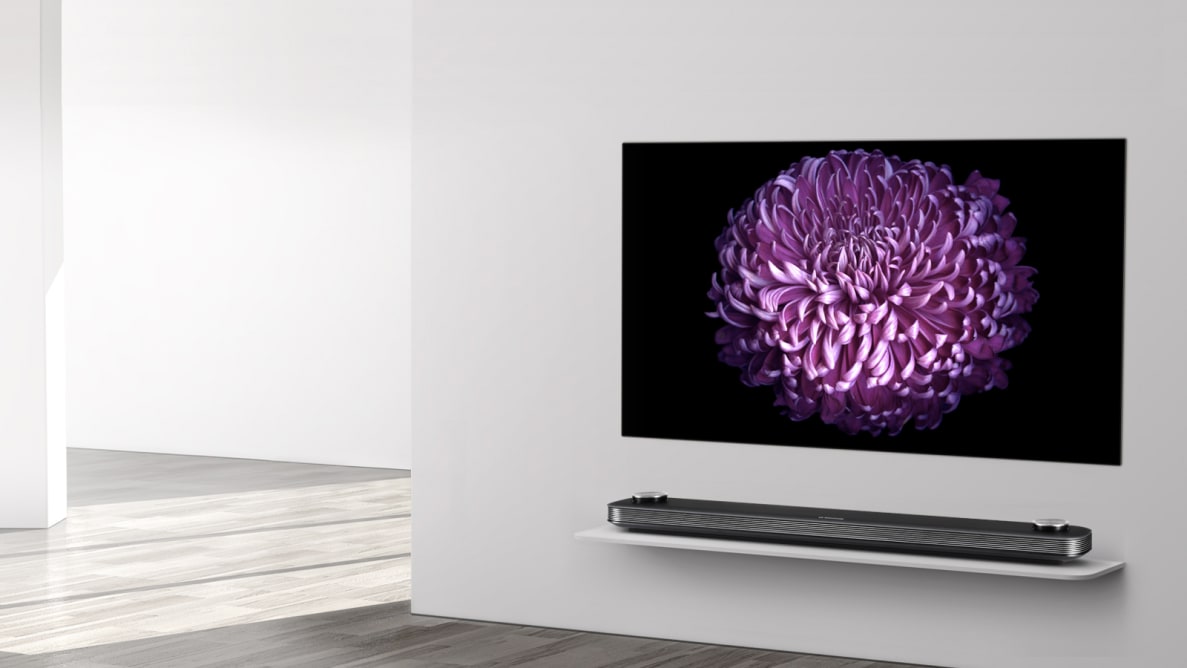The point of all this jet-setting? To test LG's new "wallpaper" W7 OLED TV, the company's flagship TV for 2017, within an inch of its pencil-thin life. Spoiler alert: OLED is still king of the ring where picture quality is concerned, and the W7 is the best OLED we've ever tested. It nips and tucks away some of the minor issues we had with last year's OLEDs, and still plays all of OLED's greatest hits: perfect black levels; emissive, saturated colors; and viewing angles so reliably wide that you don't need to test them. Simply put: this is as close to perfect as TVs get.
Here's the catch, though: you can likely say that about all of LG's OLEDs this year; LG's improvements to the W7 are a rising tide that lifts its entire lineup of OLED TVs. So while I'm happy as a clam to have spent my time with the W7, most people should buy one of LG's other OLEDs, like the far cheaper C7 that'll debut later this year. If you're curious to see what LG can do when it throws caution to the wind, however, read on. Fair warning: we're going to nerd out.
About the LG W7 Series
{{ amazon name="Dolby Atmos Blu-Ray Demo Disc (09/2015)", asin="B01MTN88CC", align="right" }}
LG's "wallpaper" W7 Series OLED comes in two screen sizes:
• 65-inch (LG OLED65W7P), $7,999 • 77-inch (LG OLED77W7P), $19,999
Just like in past years, the company's flagship line is only available from very big to huge sizes, with the prices to match. I tested and reviewed the 65-inch W7, but I expect performance to be essentially identical between the two TVs. Both are wall-mount only, and come with a 4.2-channel Dolby Atmos-compatible soundbar that also houses the video/audio inputs.
How We Tested
Because it's $8,000, only affixes to the wall, is as thin as a pencil, and is the product of decades of work and research, it's understandable that LG didn't want to send it to our lab in Boston near MIT for testing.
So I packed up a not inconsiderable list of items—including our $12,000 tristimulous meter, an input lag tester, a signal generator, and everything else it takes to run the full suite of TV tests—and schlepped our lab, mobile style, out to the Clift hotel in San Francisco.
All told, that meant packing my suitcase with a Konica Minolta CS-200 color meter; a Konica Minolta LS-100 light meter; our QuantumData 780a Signal Generator; our Leo Bodnar input lag tester; and the test laptop. All in all that's about $20K in equipment. You can imagine the fun I had going through security with it all.
This allowed me to essentially bring Reviewed.com's entire test lab on the road with me. The biggest difference was not having access to Reviewed's massive collection of Blu-rays and our Blu-ray player. But fortunately, LG had content options on hand.
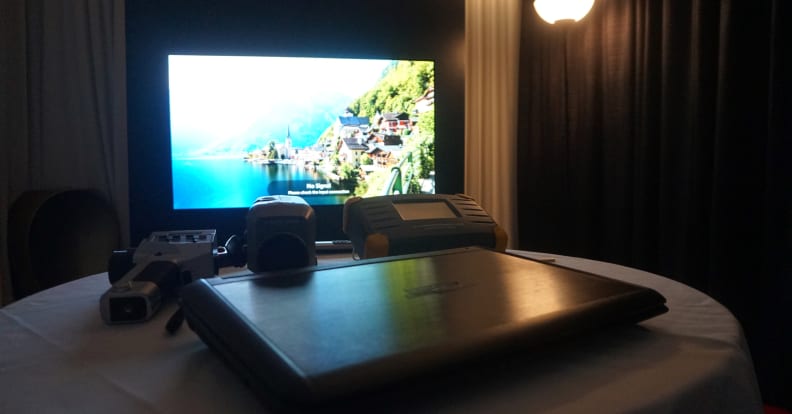
Pictured: our core copse of lab test equipment, safely arrived in my little W7 test chamber at Clift in San Francisco
Pros & Cons
Pro: LG has just about solved all the tiny little OLED problems
If you know about OLED TVs, you know they're Quite Good™. If you don't, now's the time to learn: OLED is New™ and Quite Good™, especially where picture quality is concerned.
This is one reason why LG is almost one of the only OLED makers right now. Yes, Samsung had one in 2013, but it was a different "kind" of OLED panel, and both Panasonic's 2016 OLED launch and the newly announced Sony Bravia OLED both use LG OLED panels. That doesn't mean they're the same TV, but it does mean LG's finally producing good enough (and conversely, enough good) panels that other manufacturers are jumping aboard the OLED bandwagon.
Last year's flagship, the aptly and wonderfully named G6, was our top-scoring TV for the year—but it wasn't entirely perfect, either. Brace yourself for some techy TV nerd stuff.
The 2016 OLEDs had issues with input lag—a slowdown in response between when a button is pressed and when corresponding action happens on the screen (during a video game)—with HDR enabled. They also continued to struggle with properly displaying very dark, shadowy grayscale tones on screen. That is to say, the "off/on" nature of OLED pixels originally made it difficult to "turn on" out of black (or "off") and apply a subtle amount of voltage during gentle, low-light scenes.
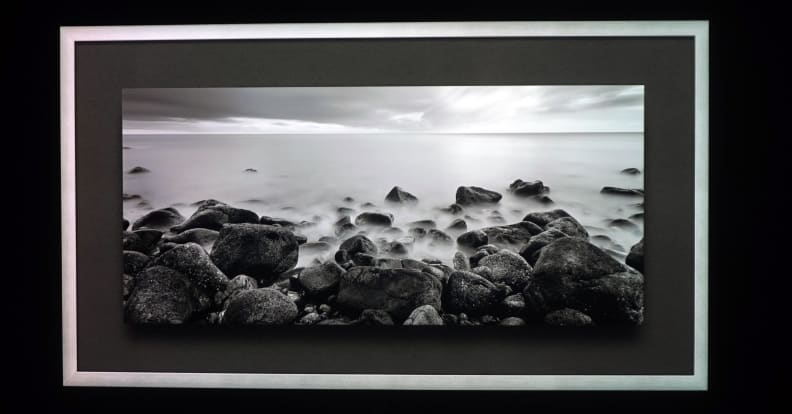
LG has improved the W7's low-light detail preservation. Naturally, the contrast is still amazing
In short, the 2017 W7 (and we assume every other 2017 OLED from LG) tackles these issues deftly. While I brought our input lag tester along, I wasn't able to test a full 4K/HDR signal's input lag without additional equipment. The current Leo Bodnar model only outputs an "SDR" 1080p signal, and to get proper numbers, you need to be able to put the TV into HDR mode.
But LG tested the W7's HDR input lag on-site, and it registered a very respectable 24.2 ms of input lag. Likewise, testing revealed much improved low-light performance. LG has also improved the non-HDR APL luminance scaling, though in ISF Expert 1 (calibrated) it's still rather dim, around 50 nits. Translation: no noticeable input lag, and dark grays look like dark grays.
Con: The price tags for the W7 TVs are still a bit off the rails
The 65-inch W7 is $8,000 and the 77-inch is $20,000. Don't really need to explain this one, hopefully!
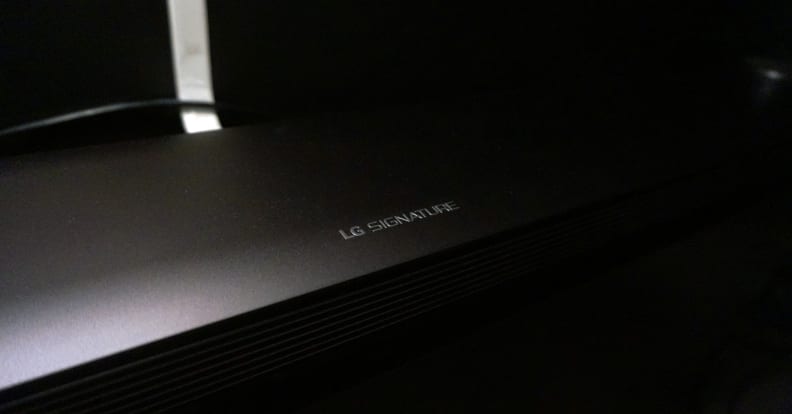
The "wallpaper" W7 TVs are hard to manufacturer, high quality, and downright rare. It makes sense that they cost an arm and a leg.
Pro: Everything that's been good about OLED from the start? It's still good
Naturally, the W7 still does all the things that make OLED great. Let's break it down.
OLED (or Organic Light Emitting Diode) TVs are like old plasma (PDP) sets in a way. Both are "emissive" style displays, compared to the "transmissive" nature of LED/LCD TVs. This means they don't use a backlight element to make their light, but each cell or pixel emits its own light independently of the others. This allows them to be hyper-controlled in a fine-tuned fashion, so they can be turned off and on independently of one another.

The W7 still delivers very accurate and highly saturated colors.
This "basic" functionality of the panel is what makes OLED look so good. Excellent black levels owe to the fact that the pixels can shut all the way off. It's the difference between being in a ptich-black room room and just shutting your eyes. This is also why OLEDs boast such good, wide viewing angles: their light source is much closer to the screen, unlike with LCDs, which have various layers in front of the backlight.
In fact, when it comes to regular, non-HDR content, LG's 2017 OLEDs (and the W7) are basically perfect TVs. They check off all the boxes: accurate and saturated colors; tons of contrast; good input lag results; smooth motion; and plenty of brightness. LG even improved glare reduction via the addition of a "neutral black polarizer." I honestly have no complaints, as long as you have a suitable dark room to view them in.
Con: In today's world of hyper-bright LED TVs, OLEDs can look dim
The W7 gets plenty bright in HDR mode—more on that in a minute—but (again like the plasmas of yesteryear) it's not naturally the brightest TV around. For years now, LED TVs have been able to get pretty bright (anywhere from 150 to 400 nits in "torch" modes). Because they're emissive, OLEDs generally have to limit their brightness a bit based on how much of the screen is bright.
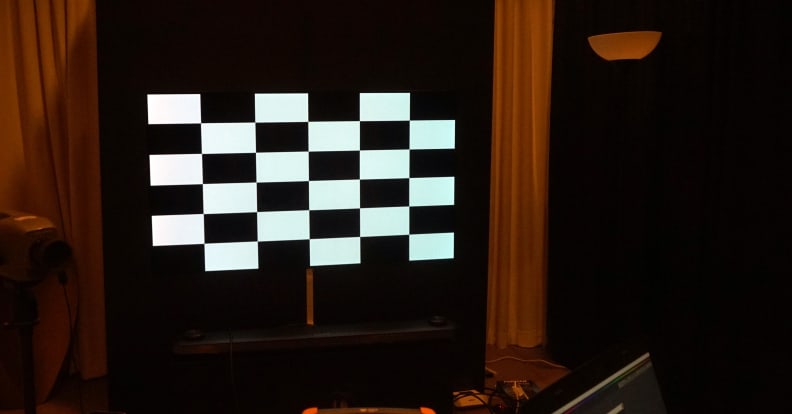
The W7 delivers the same excellent black levels of past OLEDs (~0.005 nits), but this ANSI pattern in ISF Expert only pumped out about 50 nits of brightness.
This isn't intrinsically a bad thing. Lower brightnesses are less noticeable during scenes where most of the screen is alight (assuming a relatively stable ABL, which the W7 tested for). But it does mean the W7 may "appear" to be outshone in a retail environment, and even in HDR won't compare to the 1000+ nit models coming along this year.
On the other hand, it matches and about outshines the 2016 Vizio P Series, which is awesome progress for an OLED. I measured a max of about 650 nits sustained during a 10% HDR test pattern (a white box in the middle of the screen). Like past OLEDs, it's also capable of very bright, saturated colors, and definitely comes close to meeting the new "wide color gamut" DCI-P3 standard.
Pro: This is probably the coolest TV design we'll see this year
The "wallpaper" W7's biggest claim to fame (outside of, you know, having one of the best-looking screens in the world) is its stunning on-the-wall design. It's really hard to overstate just how awesome this thing looks once it's mounted. The screen is just a screen and sits/hangs flush on a flat metal frame. It's so close to the wall it almost looks embedded.
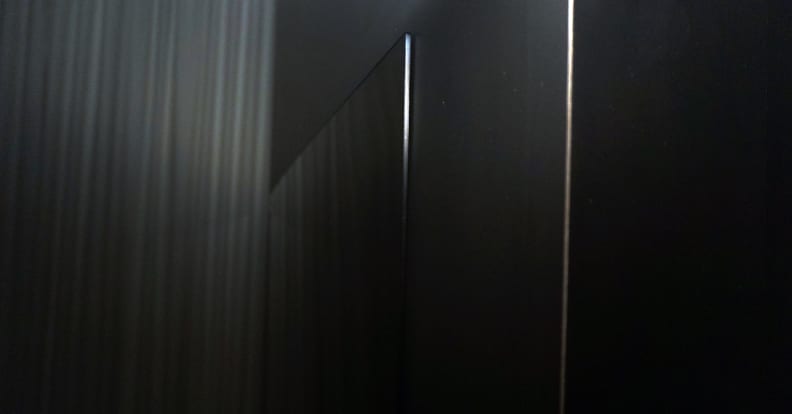
There's a "wallpaper" OLED on the wall—can you find it?
All of the "TV stuff"—the chips, software, A/V ports, and everything else—are housed in the included 4.2-channel soundbar, which connects via a single connector ribbon cable. This is very similar to Samsung's "OneConnect" approach, except instead of giving you a tiny, sleek, hide-able box, LG sticks you with a 5-foot Dolby Atmos speaker with extending/retracting speakers.
If Sony can be said to be obsessed with slapping speakers onto/into things that may not necessarily need them, it would be easy to fault LG here for insisting on transforming ones—but we'll let it slide for now. I unfortunately can't comment on how hard or easy it is to mount the W7—but it can't be any more complicated than a standard TV mount job, and the screen is much lighter without the electronics.

"We have an OLED!"
Con: "Virtual" Dolby Atmos just isn't all that amazing
After the picture quality, the W7's sound quality is probably the next most important aspect. Unfortunately, there are a number of flaws with the soundbar approach:
• If you're spending $8,000 (or $20,000) on a TV, you probably have a "real"sound system
• If the soundbar isn't close to the bottom of the TV (height-wise), sounds seem to emanate from the floor
• The "virtual" Atmos does not really hold a candle to actual, surround-sound Atmos
• You can't put the soundbar terribly close to the wall due to the port placement on the back
In short, the soundbar is not unwelcome, but it isn't the perfect companion to the W7's excellent picture quality. That's not to say it sounds bad—I very much enjoyed the soundtrack to Jurassic Park, much more than via traditional TV speakers. But at this price point you may not use the soundbar speakers at all.
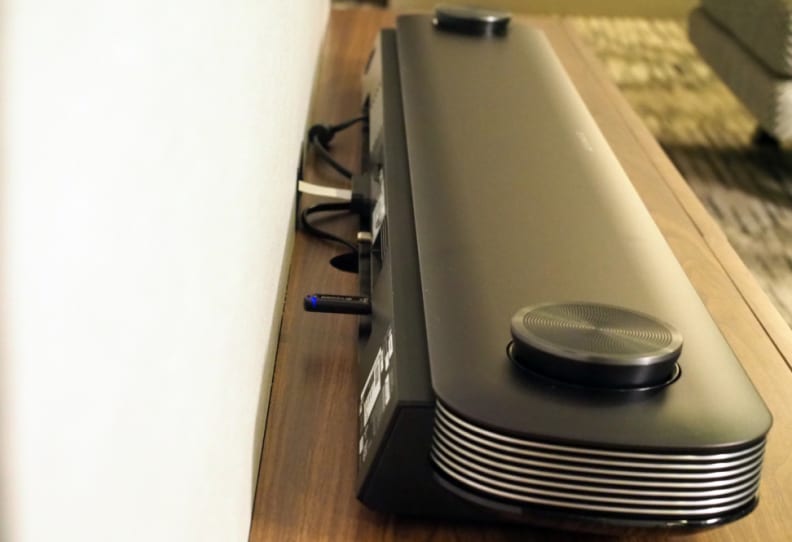
The included 4.2-channel soundbar uses two upward firing speakers that retract into the bar when not in use. It's much better than standard TV speakers, but is not a proper Dolby Atmos replacement.
Should You Buy It?
Yes—if you have the money, and want the coolest-looking TV around.
In a nutshell, we can't realistically recommend LG's W7 OLED to most people. Why? Because we already know LG's other 2017 OLEDs—the G7, E7, C7, and B7—are likely to be nearly as good and cost significantly less. So for 99.9% of people, just wait and pick up one of those.
But if money's no object? Go for it. Why not? This TV looks gorgeous, it's a design marvel, and you'll get a lot more kudos for slapping this sucker on your wall than being the 15th person on your block to get a Range Rover.
For everyone else, just wait. OLEDs are finally falling to reasonable prices, and with competitors at other companies like Panasonic and Sony buying up panels to make their own OLED TVs, it's only going to get better from here.
Meet the tester
Lee was Reviewed's point person for most television and home theater products from 2012 until early 2022. Lee received Level II certification in TV calibration from the Imaging Science Foundation in 2013. As Editor of the Home Theater vertical, Lee oversaw reviews of TVs, monitors, soundbars, and Bluetooth speakers. He also reviewed headphones, and has a background in music performance.
Checking our work.
Our team is here for one purpose: to help you buy the best stuff and love what you own. Our writers, editors, and lab technicians obsess over the products we cover to make sure you're confident and satisfied. Have a different opinion about something we recommend? Email us and we'll compare notes.
Shoot us an email

